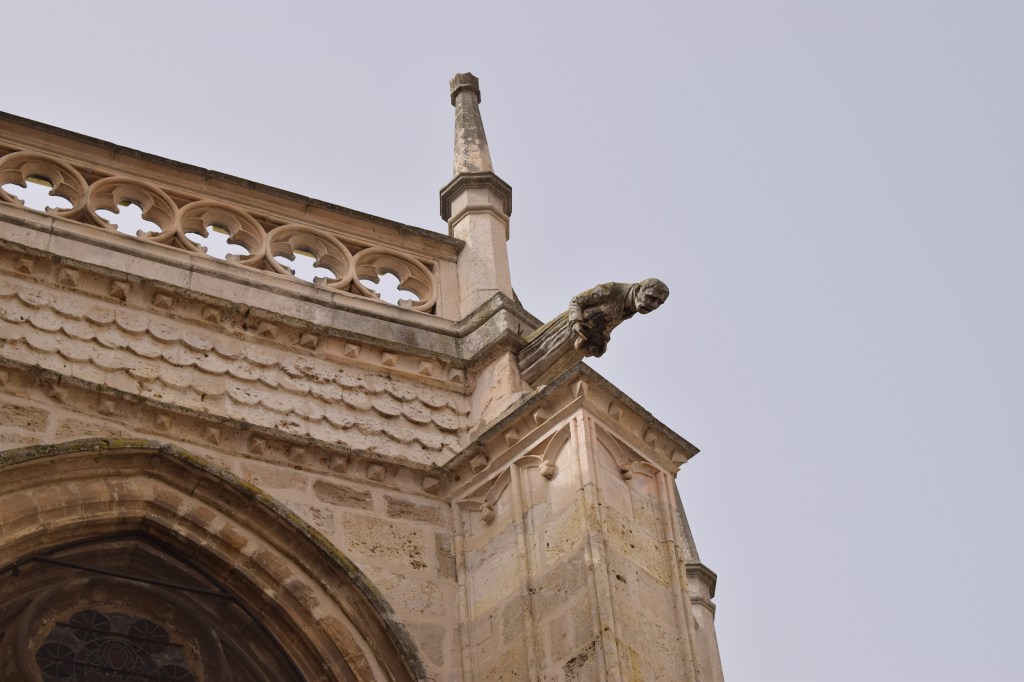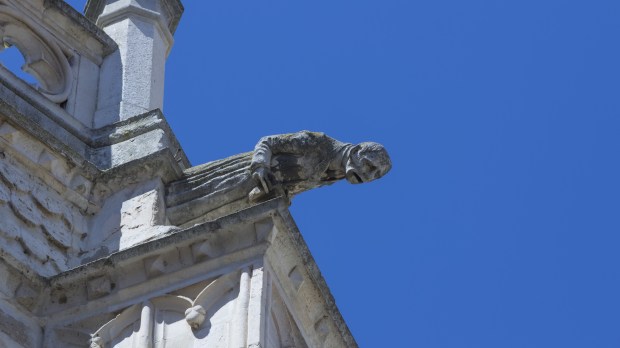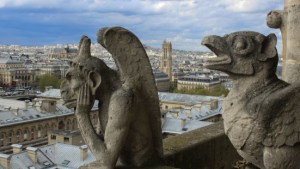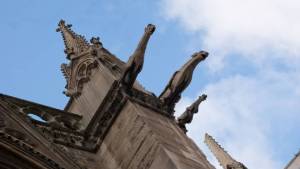Lenten Campaign 2025
This content is free of charge, as are all our articles.
Support us with a donation that is tax-deductible and enable us to continue to reach millions of readers.
A gargoyle is not a devilish, winged, dragonesque monster. In strict architectural terms, it is the protruding part of a pipe that deflects the water that would otherwise accumulate on a roof. Egyptians, Greeks, and Romans used them in ancient times, to prevent moisture from destroying their ceilings – that is, they are not a medieval invention.
The French word gargouille derives from the verb gargouiller, which in turn comes from the Greek gargarizó – to gargle. That is what the gargoyle does: It collects and then expels water away from the roofs and walls of the building.
And some of them, it seems, take photos. At least, that’s what we find in the Gothic cathedral of San Antolín de Palencia – popularly known as “the unknown beauty,” as it is not as well-known as other cathedrals in Europe.
Technically speaking, if one of these stone carvings does not serve as a downspout, then it is not a gargoyle but a grotesque – though popular imagination lumps them together. The “photographer gargoyle” of San Antolín is a gargoyle, indeed. The open mouth of the curious character in a buttoned cassock holding a camera helps keep the roof of the cathedral (the third largest in Spain) nice and dry.
According to an article published by Atlas Obscura, “the story of the photographer gargoyle begins in 1755, when a powerful earthquake hit the Iberian Peninsula and North Africa.” Palencia suffered massive damage from the quake, and the roof of the cathedral was destroyed, almost in its entirely. It took the city more than 150 years to begin its restoration.

Starting in 1908, the Palencian architect, sculptor, journalist, and politician Jerónimo Arroyo led a restoration project. Urban legends claim that “the camera-toting gargoyle was made to honor a photographer who was killed by a falling stone during the restoration.” Some others say that the gargoyle was Arroyo’s tribute to José Sanabria, a photographer who accompanied him, documenting his work.
Atlas Obscura explains that an investigation led by the journalist and historian Julián García Torrellas concluded that the gargoyle is a homage to another of Sanabria’s friends, Luis Rodríguez Alonso, an important Palencian photographer “who authored one of the first graphic reports on the Palencia cathedral.”
Gargoyles and monsters
The celebrated historian and art critic Jurgis Baltrusaitis, the author of the book The Fantastic Middle Ages, is a constantly cited authority when it comes to the study of the monstrous in medieval art. Baltrusaitis explained that the half-human and half-animal creatures of antiquity never disappeared completely in Europe. Gargoyles could be explained as a survival of these Greek and Roman motifs in later European art.
Other sources attribute the use of gargoyles to a legend linked to the life of St. Roman, the bishop of Rouen. According to legend, St. Roman managed to subdue a dragon named Gargouille (“throat,” in French) by showing him the cross. The saint then tied a rope around the dragon’s neck and led him to the center of the city, where the dragon was killed and burned. However, the head and neck of the beast could not be consumed by the flames. Thus, St. Roman decided to hang it from one of the walls of the cathedral, as a warning: Evil stalks, and can only be overcome by the cross.
Some other historians point out that the use of gargoyles and grotesques in cathedrals has a pedagogical function. These fantastic beasts reinforce the notion that evil remains outside the church, metaphorically and literally, and that evil flees from the holy places: “Upon this rock I will build my church, and all the powers of hell will not conquer it.” It was a way to graphically represent what is written in Scripture, in times when there were few who could read and write.



